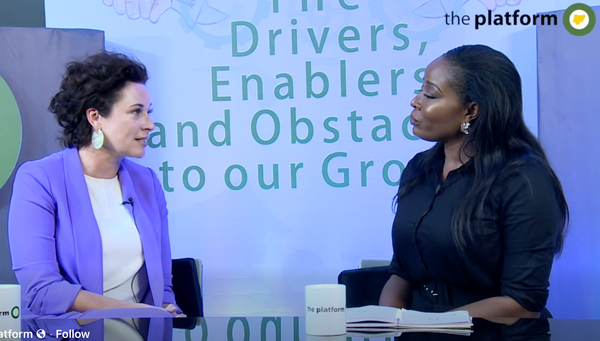The worst part of your proposal (or the part that will get you your huge deal)

“You should write about how you do proposals, because it’s really different from all the other ways I was led to believe proposals are done.”
That’s what one of my clients– my first client to sell a six figure book at auction– said to me last week. And I realized that I hadn’t written a post for this newsletter in a while.
This conversation came after I’d spent about 72 hours rooted to my couch, not moving much to change from pajamas or hydrate for three days trying to finish my latest client’s proposal.
“Have you eaten today?” my kids would ask as they came back from camp.
This particular proposal was the faintest whisper of an idea three and a half months ago. Neither the client nor I were convinced there was a book there. We were like, “Let’s give it four months to see. . .” and we somehow got a 140 page finished proposal in three and a half months. And we had agents interested within 18 hours after sending it out.
THAT DOES NOT ALWAYS HAPPEN.
I have another proposal I’m wrapping up next week that came in more baked but still took six months. And then I have another proposal wrapping up this summer that the client really, really wants to be done in July, and I’m trying. But I’m not convinced it won’t take until August.
Book proposals are like baked potatoes. They just do not cook uniformly.
But back to the conversation about how I do book proposals. I get slightly maniacal about them in the end, and I’ve gotten more so with each one I’ve done. I’ve learned from each agent we’ve pitched and each publisher, and I also learn from other authors and reps, and everyone else in the industry I talk to regularly.
That’s the thing about being a collaborative writer versus an author. When I was an author I only had my three experiences over my career to guide me. But now in a year’s time I will have had five or six more experiences to draw from. You learn so much more each year, and the books are all so different.
There are a lot of ways that books are like startups, but there is one major way books are not like startups: THEY ARE NOT ITERATIVE. That means that your proposal is not your minimum viable product.
You get one shot to get that proposal in front of agents and then in front of publishers. And then later, you get one shot to get the book in front of the sales team, reps, store owners, reviewers and the public. There are so just many books.
More than two million books are published globally every year. Every Tuesday, the shelves get a huge new push of shiny new objects. So throughout the cycle new is constantly pushing away old. And new becomes old instantly. And that two million represents about six percent of proposals that go out to agents.
The numbers are hard to wrap your mind around.
It’s not even a one-in-a-million shot to get an agent or a publishing deal. There are more pages and words than anyone can read. Everyone is both looking for the next undiscovered talent but also looking for any reason to say no and clear something off their pile in order to just function and do their job.
My job as a collaborative writer is to make sure I don’t give them a reason to say no and push you aside.
And as the book is leaving my paws and going out to agents, that’s the last time it’ll be 100% my screw up if it goes nowhere after that.
And so while other people might do 20 or 30 page proposals mine have become more than 100 page documents. Because I get paid a flat fee per month, this is not in my short term interest. But it is in my long term interest for that book to sell for a lot of money.
Of all the components of a proposal the part that takes up the most time, that kills me, that takes up the most space is the annotated table of contents. It’s now what I do completely differently than I used to when I was writing my own proposals.
People think it’s going to be the sample chapter. That’s comparatively way easier.
ATOCs (as they are called. . . even that acronym is grating!) are brutal if they are done right. But I’ve come to learn they also hold all the keys to whether or not you actually have a book.
It’s probably the hardest writing spec I’ve ever done. Because it has to show and tell at the same time. It’s a document that has to entertain and be utilitarian at the same time.
It’s a document that is ostensibly just telling you what the summary of chapters will be. But think about it: How many of these things do agents and editors have to read every day? It’s the longest part of the proposal, the part where the least thought has often gone into it, and the part where the least attention to writing has usually been applied, because it’s often seen as a utilitarian part of the proposal. It’s where eyes tend to glaze over.
That’s how I used to approach them too when I was doing my own books. Here’s a half-assed road map so you have an idea that I have an idea of where I’m going here. And that certainly worked well enough to get me three large book deals. But “well enough” isn’t good enough for my clients.
I’ve learned ATOCs are a huge opportunity if you do them differently. If you make them not just a utilitarian part of the proposal but a great work of writing in and of themselves. If you make each chapter summary its own small short story. If you give it a powerful opening, show throughout the summary the kind of writing you will be bringing to that chapter. Entice the reader to want to commission that book so that they can hear the end of the story. Tease them with what else will be in that chapter and make them want to learn the rest.
And most of all: Make it believable that there’s twenty solid pages of material you have to say about that topic.
This is the single biggest way that ATOCs go wrong. I’ve taken a look at few friends’ ATOCs lately and all too often, they say all they have to say in a one paragraph summary. You have to convince us that there’s not only 20 pages worth of that topic you have to write, but that it’s 20 pages we want to read.
And then, at the end of each chapter summary, you need to show how that chapter will logically flow into the next one.
The goal is to write each chapter summary in about five pages, but that is a lot to do in five pages. So invariably the ATOC winds up being at least 70 pages, often 100 pages. And then you are trying to line edit a 70-100 page document again and again before submitting it around.
It extends the process of creating a proposal. It creates more work for everyone on the front end, before you know if you have something anyone wants.
But there are three great reasons to do it this way.
The first is when you write an ATOC this way, you are essentially writing one-third of the book. That means all the holes become apparent. All of the places you’ve kinda gaslit yourself that the structure will work or it’s good enough and you’ll figure it out. Or somehow this thing will work on the page even though you know it won’t. It all becomes evident.
There are so many times deep into an ATOC, when we change the structure, move chapters around, discover that what we thought was a chapter isn’t a chapter, but is a section of another chapter.
You get a really deep handle on what you are writing, and that is going to show when an editor looks at the proposal and when they’re asking you questions about your audience, or your structure or what might make this book different. It’ll be deeply thought through in a way it isn’t until you have done this.
The second is you get a sense for what writing the book is going to be like. If you hate it, you will know during this step. It’s a good time to bail before you get a deal. (I have had authors bail at this point for this reason.) It’s when it becomes more fun in a torturous way for some or stops being fun for others.
The third is the best reason. Assuming you get a deal– which you are more likely to, because the book is so much more thought through and the proposal is so much better– you are so far ahead of the game!
Assuming the editor agrees with the direction you’ve staked out in the ATOC, you already have a clear structure and you have written about a third of the book. There’s no “Oh sh*t, now we gotta write this thing!” moment because you are already in the middle of it.
My author who said I should write about how I do proposals is a great example of that. Her book isn’t due until December 31, and we’ve already finished drafting it and gotten back edits on more than a third of it. We are comically ahead of schedule. Which means we’re already thinking about how to make the marketing plan a monstrous success.
And the same thing will happen with the one that is about to go out. We can easily finish it in about six months’ time. When Paul was reading it for me as a final set of eyes, he said he had to keep reminding himself he was reading at ATOC and not the book itself.
There is always going to be a cheaper, faster way to get a proposal done than the way I do them. But like I said at the beginning, you get one shot. I can only work on so many projects each year. I want to make sure my authors get the best possible shot at the best possible deal, and then that book is as set up for success as it can be.




